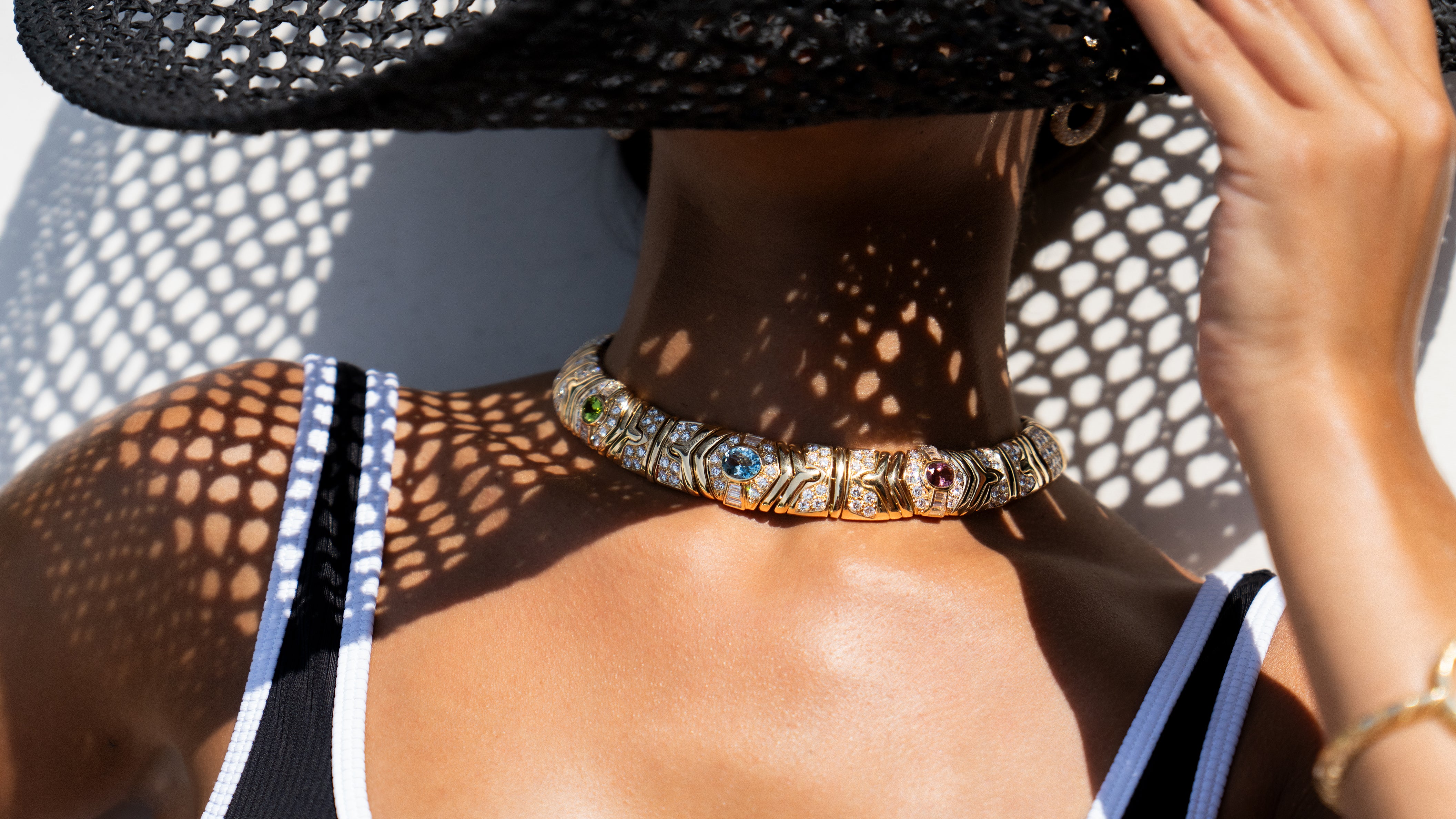Frank Walter Lawrence
Largely forgotten, this Arts & Crafts jewelry designer, once recognized for his imaginative creations, was highly sought after by discriminating clientele at the turn of the 20th Century.
From Baltimore to NYC
Frank Walter Lawrence was born in Baltimore, Maryland, in 1864. With his parents and 12 siblings, he moved to Newark, New Jersey, in 1880, where Lawrence became an apprentice at Durand and Company, a jewelry manufacturer. Subsequently, he studied with the silver firm of Howard and Company, as well as jewelry retailer Jaques and Marcus in New York City.
Opening Shop
Nine years later, in 1889, upon completion of his jewelry education, Lawrence opened his first business in Newark, calling it Frank Walter Lawrence. (In time, he would shorten the firm’s name to F. Walter Lawrence.) Four years later, he moved his store to 857 Broadway in Manhattan, and then to 41 Union Square. Business took place in his upstairs atelier, where he designed jewelry, silverware, and bronzes for his clients.
Lawrence was more interested in creating jewels that were inspired by history, color, and texture. He focused his energy on the craftsmanship and innovation of each piece, rather than the monetary worth of the individual components. This theme was one he often discussed in his writings.
The designer’s jewelry career flourished during the Arts & Crafts Movement. His exquisitely handcrafted pieces featured a predilection for semi-precious colored stones, unique materials, and natural themes. Lawrence perceived his creations as wearable sculptures, basing his designs on natural motifs. He employed less common gemstones in his pieces, including chrysoprase, pink tourmaline, and hessonite garnet.

Partnership with Manz
In the early years, Lawrence partnered with Gustav Manz, a talented German, who adapted Lawrence’s sculptural designs with minor alterations for various wholesale clients. The two collaborated on several jewels, including a variety that featured sea life. Mermaids were a recurring theme. Scallop shells, ocean waves, and Nouveau-type frames were also employed.
Notables
One notable piece was a gold neck ornament, created in 1903, which featured a nautical motif. An irregular baroque pearl formed the mainsail of a ship, while dogtooth pearls took the shape of sails on four smaller boats that appeared on either side. The baroque pearls used in this piece were harvested from the Mississippi River.
In the final decades of the 19th Century and the beginning of the 20th Century, Sir W.M. Flinders Petrie undertook archaeological expeditions of ancient sites such as Memphis and Thebes. His excavations started a craze for ancient artifacts. American jewelers responded by designing pieces with lotus and scarab themes.
One example is a necklace and earring suite Lawrence designed in gold, fashioned with turquoise scarabs and enameled lotus flowers, with snakes providing the final touch. Lawrence also incorporated fragments of ancient bowls, bottles, and cups that had “a wonderful iridescence” from being buried so long. Other motifs employed by Lawrence included desert scenes, caravans, pyramids and lotus, and palm trees.
In the early 1920s, Lawrence adopted Art Deco style into his pieces, although he didn’t abandon his Arts and Crafts pieces. In a catalog produced by the firm, Lawrence displayed an eclectic array of items that included a bronze door knocker depicting a pair of bears, a Gothic pendant decorated with opals, and a brooch with a moonstone intaglio of Aurora, poised in a diamond morning glory.


Foray into Silver
While initially retailing the works of other silversmiths, Lawrence began to design his own silver pieces that were produced by the Newark firm Lebkuecher and Company. Like his jewelry, many of his designs featured a nature theme, incorporating such motifs as mushrooms and flowers. While he didn’t create a flatware pattern, he did design a child’s fork and spoon set. Other pieces included salt and pepper shakers, vases, bowls, and a tea strainer.
Jeweler’s Mark
Lawrence’s pieces have the mark ‘F.W.L.” or ‘F.W.LAWRENCE” or “F. WALTER LAWRENCE.” In 1913, Lawrence and two of his cousins incorporated the firm, adding “Inc.” to their stamp.

The End of an Era
Frank Walter Lawrence died of a stroke in 1929 at his home in Newark. His cousins continued to run the business, using the same principles established by Lawrence. In 1975, the corporation was dissolved, marking the end of the 77-year-old jewelry firm.
The business man who merely makes for people what they want, and does not get the prestige with men of making for them things they did not know they wanted, is a failure and falls behind in his business. – F. Walter Lawrence.
Exhibits
- 1903 Arts and Crafts Exhibition, Syracuse and Rochester, New York
- 1904 Louisiana Purchase Exposition (St. Louis World’s Fair), St. Louis, Missouri. Twenty-seven pieces of jewelry were displayed.
- 1914 Arts and Crafts Exhibition, Art Institute of Chicago. Twenty pieces of jewelry were exhibited.
- 2004 Newark Museum: Discovering an Unknown Master: The Jewelry and Silver of F. Walter Lawrence
